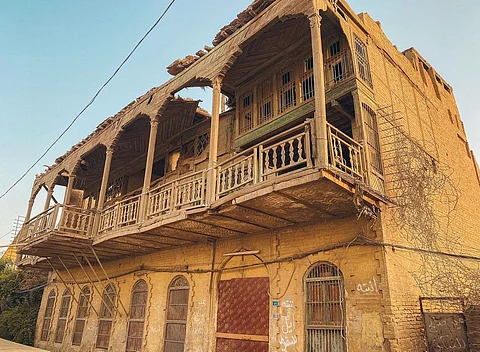
- Destinations
- Experiences
- Stay
- What's new
- Celebrating People
- Responsible Tourism
- CampaignsCampaigns
- SubscribeSubscribe
- Buy Now

On the western bank of the Tigris in Baghdad's Karadat Maryam district, a villa in disrepair stands on the brink of collapse. Once a stately riverside residence, it housed the celebrated "Queen of Crime" Agatha Christie. The house was the address of one of the most renowned authors of the 20th century during her travels through Iraq alongside her archaeologist husband, Max Mallowan. However, today, the historic house, once steeped in literary and archaeological significance, suffers an undignified neglect and is confronted with a bleak future. As reported by a Turkish-based international broadcaster, the current dilapidated state of the house is a cause for alarm over a possible disappearance of what should have been one of Iraq's prized connections to a literary icon being.
Agatha Mary Clarissa Christie first arrived in Baghdad in 1928, not long after the turbulent dissolution of her first marriage. Leaving behind the land and other routes dotted by 'Memsahibs' (the term for English women in India), she ditched a trip to Jamaica for the timeless allure of Mesopotamia and boarded a train alone, which was none other than the Orient Express. In Iraq, she met Max Mallowan, whom she later married. The couple often returned to Baghdad between archaeological seasons, eventually making their base at Beit Melek Ali, a villa rumoured to have once belonged to King Ali, brother of King Faisal I.
In the tranquil setting amid the dust of ages of ruins, Christie found both solace and inspiration, using her riverside balcony to write and reflect. Here, she worked on parts of 'They Came to Baghdad', among other works, while supporting and participating Mallowan in his archaeological endeavours across Iraq and Syria.
Christie's engagement with archaeology wasn't limited to having a husband in the field. It was serious and sustained. Far from being a passive companion, she actively participated in digs at major sites such as Ur, Nimrud, Nineveh, Tell Arpachiyah, and Chagar Bazar. She brushed, labelled and restored artefacts, with her Leica camera always at hand, documenting many finds. Christie also held deep respect for local Iraqi workers and frequently acknowledged their skills.
Her life around excavation sites and archaeological circles colourfully informed her writing. Her memoir 'Come, Tell Me How You Live' offers a humorous and insightful glimpse into dig life. Novels like 'Murder in Mesopotamia', 'Appointment with Death', 'They Came to Baghdad', and 'Death Comes as the End' carry clear traces of her Middle Eastern experiences, conflating fictional intrigue with the textures of the archaeological world she inhabited.
Christie understood the storytelling nature of archaeology itself—the process of reconstructing lost worlds from fragments. It was a natural extension of her literary craft, and these years proved some of her happiest and most creatively fertile. More on Christie's entanglements with life in Iraq and exposure to archaeology can be found in the book 'Archaeologists in Print' by Amara Thornton.
Today, the villa that was at the heart of such a rich cultural intersection, and where plots of some of Christie’s famous thrillers that we read and love were possibly envisaged, lies in great peril. Its roof is partially collapsed, its walls deteriorating. Despite being recognised as a historic structure, the house has received little to no conservation attention. The Turkish publication, mentioned earlier, reported that while many of the artefacts that her husband found here are safely kept in a museum, the house in which they lived stands in utter disregard.
It was highlighted that Agatha Christie has many novels, including the iconic ‘Murder on the Orient Express’, where scenes happen in parts of Baghdad. Previously, people could take a train in Baghdad that would take them to Türkiye and Europe.
A swift and urgent cooperation between local authorities and international partners, including the British Embassy, to stabilise and restore the building must come to the villa's rescue. Preservationists suggest the villa could be transformed into a literary or archaeological museum, showcasing both Christie’s global literary influence and Iraq’s once-thriving engagement with intellectual and cultural exchange.
Restoration is possible—but time is running out. Structural reinforcement, funding, and a clear vision for cultural reuse are urgently needed. A revitalised villa could become a centre for literary tourism, education, and cultural dialogue.
But such efforts rely on political will, international cultural partnerships, and recognition of the villa’s unique place in both Iraqi and global history. Without intervention, Baghdad may lose not just a building, but a piece of its literary lineage—an irreplaceable marker of the time when Agatha Christie made its banks her home.
